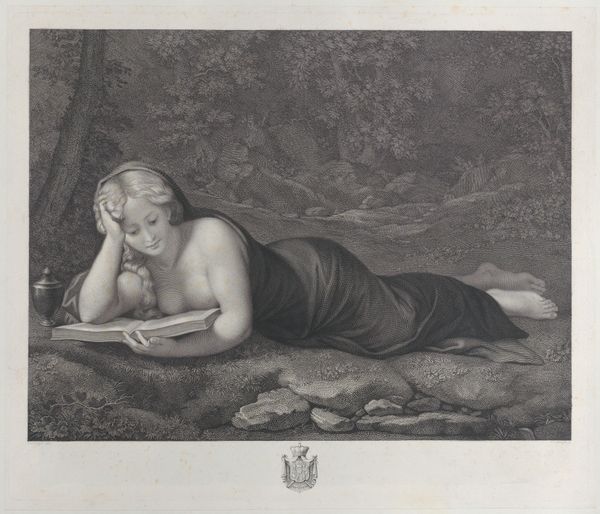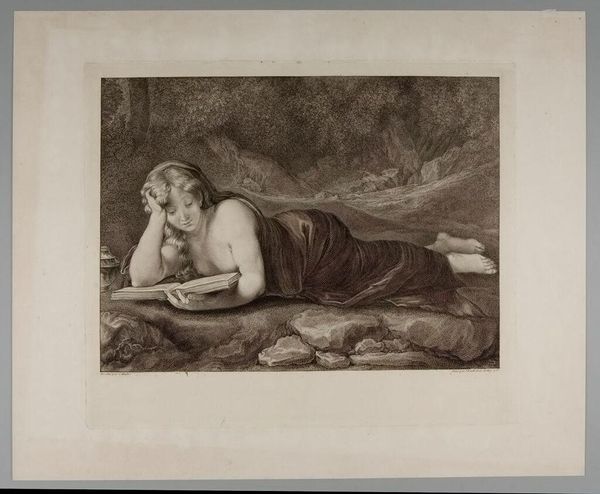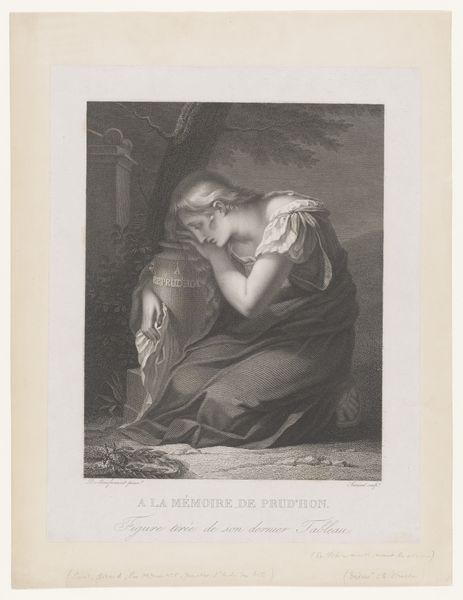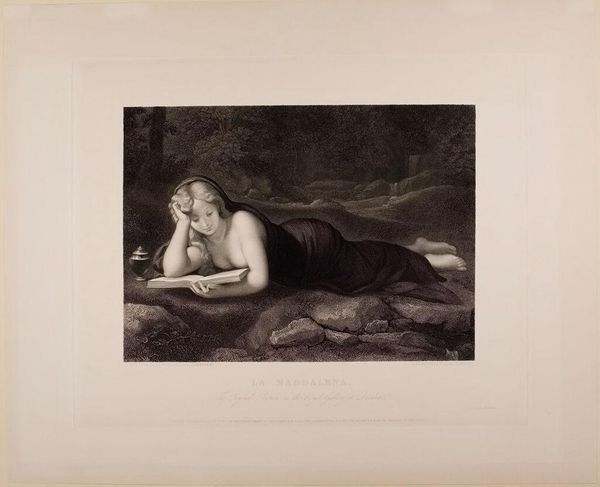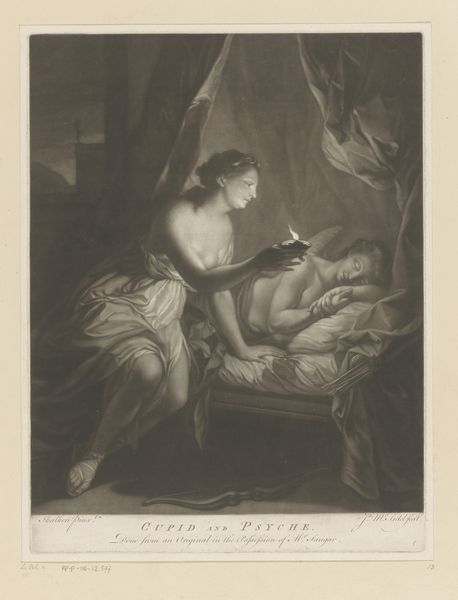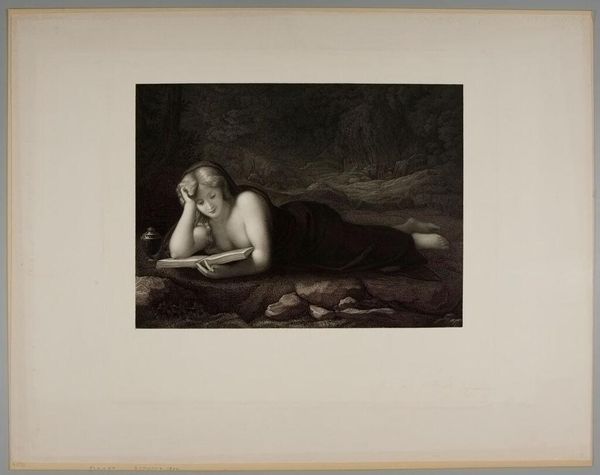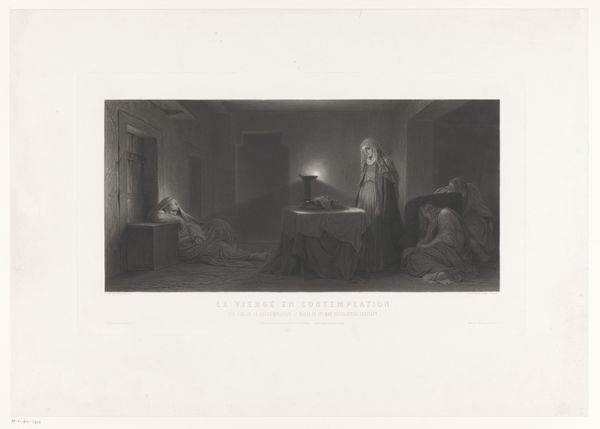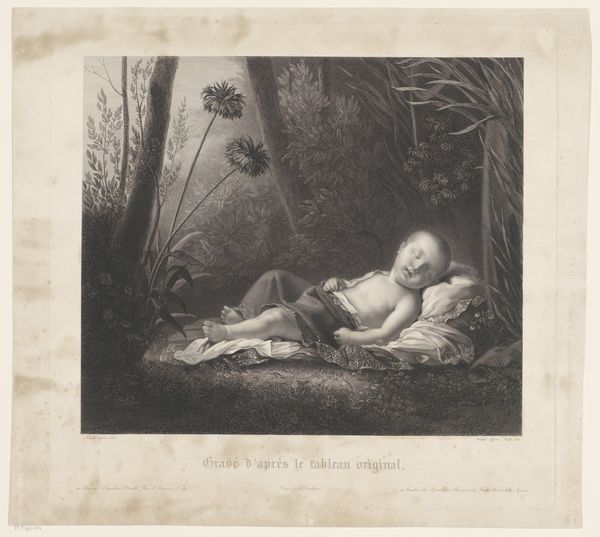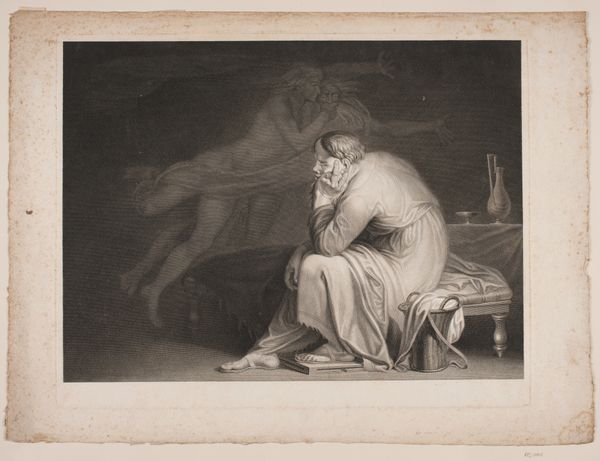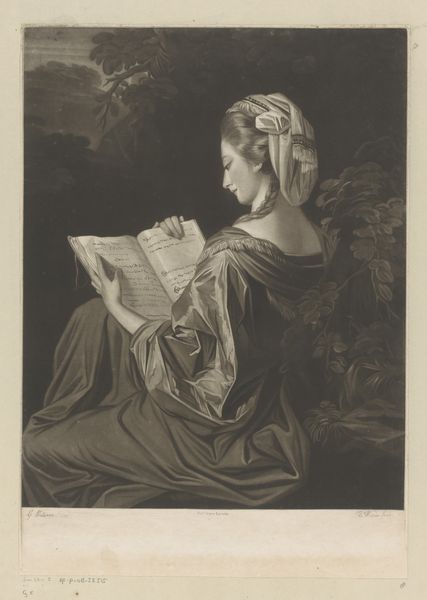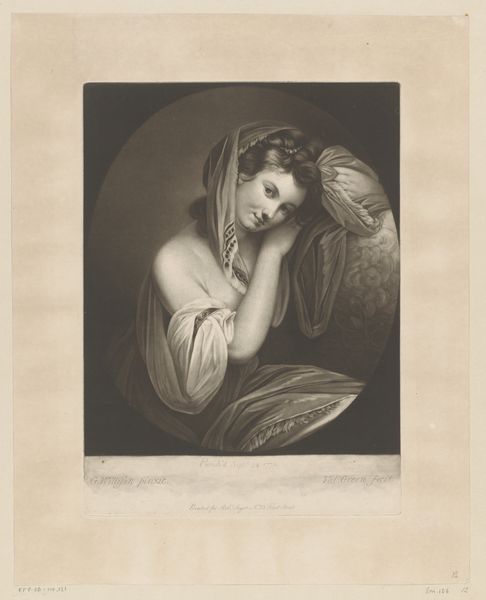
Mary Magdalene reading in the desert 1827 - 1875
0:00
0:00
Dimensions: Plate: 14 1/2 × 17 11/16 in. (36.8 × 45 cm) Sheet: 15 9/16 in. × 19 in. (39.5 × 48.3 cm)
Copyright: Public Domain
Curator: Here we have Johann Heinrich Friedrich Ludwig Knolle's "Mary Magdalene Reading in the Desert," created sometime between 1827 and 1875. It's an engraving, currently residing at the Metropolitan Museum of Art. Editor: There's a contemplative serenity about this image. The figure seems to exist in a very liminal space – between nature and the symbolic, or perhaps flesh and spirit. Curator: Precisely. It engages with Romanticism's fascination with nature as a site for spiritual awakening, but within a very academic framework. Magdalene, the repentant sinner, is often depicted in isolated settings as part of genre painting traditions or even nude as a veiled way to indulge the male gaze. Editor: That positioning is hard to ignore. But I’m equally struck by the materiality of the engraving itself. The painstaking labor to produce this print. And, the availability of these prints helped distribute ideas, especially biblical ones, during the period. It challenges the notions of high and low art, or maybe elite versus popular piety. Curator: Certainly. And Knolle, positioning himself within this established iconography, reinforces those connections for his contemporary audience. It’s interesting how the market for these kinds of religious prints catered to very specific tastes and ideologies. They want both spirituality and a nod to acceptable displays of sensuality, that will find a space to reside comfortably in the household. Editor: Looking at this image, it also makes me consider labor practices. I'd be curious to know how the creation of devotional or spiritual imagery shaped printmakers' working conditions during that time, and whether these factors were in conflict, as workers probably were living in different, or perhaps more challenging circumstances than the figures or buyers presented. Curator: Excellent point. It draws attention to the systems and social realities underpinning its production and consumption, systems often glossed over. Editor: Indeed, Knolle’s print provides a focal point to consider artistic techniques, print production, gender and class dynamics, and the social fabric from which the work and reception both arise. Curator: Yes, and thinking about all that will undoubtedly inform future visits to this piece. Editor: Absolutely, it reshapes my appreciation for the piece knowing more of how it came to be.
Comments
No comments
Be the first to comment and join the conversation on the ultimate creative platform.
